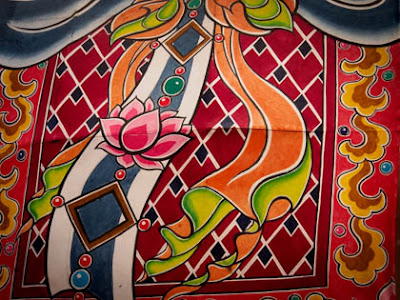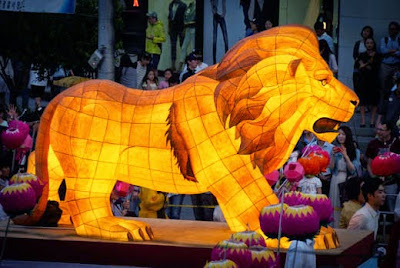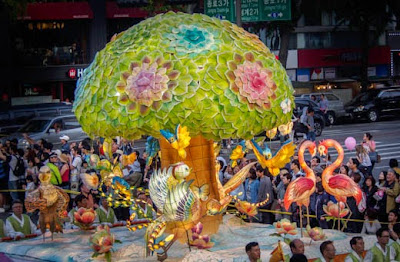After hearing a prayer request of a faculty member whose family will soon be delivering a child with an "always fatal" prognosis, I decided to repost a published article written by my sister and me. Despite receiving the devastating news early on in the pregnancy that their daughter Anastasia had a fatal condition, Michelle and her husband were blessed with the opportunity to deliver and hold their baby for one hour. Although frail, Anastasia was a powerful witness to God's love. The article also includes some advice on how to respond to families who are dealing with the loss of a child.
Perhaps it will be of comfort to others faced with this difficult situation.
Life is never worthless -
Published in
Forward in Christ magazine, August 2006
Though she lived outside the womb for only an hour, God blessed us through Anastasia.
The 20-week ultrasound is an exciting event for couples expecting a child. It is the first opportunity to glance at fingers and toes, and maybe even to begin planning for “pink or blue.” As we went for our routine ultrasound this past October, this was the excitement that we were anticipating. We never envisioned how much this ultrasound would change our lives.
Our hearts sank when two doctors walked into the room. “There’s no good way to tell you this . . .,” one began. Our daughter had a serious developmental defect called anencephaly. He went on to explain that our baby’s skull had not completely formed. As a result, her brain would not fully develop. There is no treatment. It is always fatal.
These words had barely sunk in before we were asked what our decision would be. The conversations that followed suggested many reasons for aborting our child, but always ended with the words, “But it’s your choice.” A pretty-looking book was placed in our hands. This book, under the guise of giving comfort, was testimony upon testimony of mothers who had aborted their children. Only two short stories were included where life was chosen.
Hearing our daughter’s prognosis was devastating. Many expected us to abort. Yet we knew that her life was as precious and meaningful as everyone else’s. Abortion was not a choice. God had created her and had a deliberate purpose in mind. Jesus died to give her eternal life. So she was named Anastasia Grace. Anastasia, for the resurrection that comes through Christ. Grace, that we acknowledge we deserve no favor from God because of our sin.
Annie’s kicks were initially a sorrowful reminder of what was to come. However, they quickly became endearing—a little “Hello,” “Good morning,” or “Good night” for both of her parents and occasionally a kick for her brothers as well. Our hearts were breaking knowing that she was facing death, but we had the confidence that she was completely in the care of the boundless love of Christ.
While I was holding Annie in my womb, our wonderful family and friends were holding us, both through their support and prayers. We were humbled to be the subject of so many prayers and marveled at how awesome it was to see Christian love in action. God also allowed us to see that he was using Annie’s precious life as many people dear to us reported that they had shared her story, witnessing the truths of God’s Word to those around them.
Though she lived outside the womb for only an hour, God blessed us through Anastasia.
Anastasia continued to be a powerful witness on Feb. 3, the day of her birth—and death. Although specialists told us that she was incapable of having any senses, our little girl let every nurse know that she was aware of their efforts to track her. Every time they attempted to gauge her heartbeat, she kicked their instruments and gave them an earful. Every one of them also knew the meaning of her name and our first priority upon birth. As soon as her daddy cut her cord, she was whisked to the prepared basin to be baptized.
Though she lived outside the womb for only an hour, God blessed us through Anastasia by giving us a clearer vision to the importance of life, the power of prayer, and the victory of baptism. We are grateful God gave her to us, and we await the day when we will see her again at our Savior’s side.
Timothy and Michelle Klemp are members at Resurrection, Verona, Wisconsin.
A letter to Anastasia from her Aunt Melissa Enderle:
Dear Anastasia,
Although you were alive outside the womb for only an hour, you have touched the lives of many. Despite the recommendation by doctors to have a “selective termination of pregnancy,” your parents chose to give you a chance at life—no matter how short it would be. Through baptism, you became a child of God. An hour later, you joined your Savior in heaven.
At your funeral, there still were tears shed. For me and likely for many others, it was the first funeral of a child I had attended. Seeing your tiny coffin was a reminder of how precious life really is and how every birth really is a miracle. Some of the tears were shed out of sadness, as your presence would be missed. But they were also tears of joy, knowing that you are now safely in Jesus’ loving arms.
Your life has a purpose. In our human understanding and insight, we don’t know fully what that will be. From the time of that fateful ultrasound up until the present, your story and your family’s faith has been strengthened and shared with others, both in person and through the Internet. Blood samples were taken after your birth and will hopefully contribute to the medical understanding and prevention of anencephaly. Perhaps a stronger support system will be formed for expectant parents facing similar situations. As God said to the apostle Paul, “My grace is sufficient for you, for my power is made perfect in weakness” (2 Corinthians 12:9). Trust in God’s grace and wisdom will carry us through even these most difficult of times.
Your eyes, gray and unseeing on earth, now eagerly are on the lookout, anticipating the time when you and your family will be reunited in heaven.
Looking forward to seeing you again.
Your loving aunt,
Melissa
Though she lived outside the womb for only an hour, God blessed us through Anastasia.
How you can respond to families who have lost a child
- Don’t avoid them, even though knowing what to say is difficult. A simple “I’m so sorry. I will pray for you. What can I do to help?” is comforting. It is also okay to admit that you are unsure of what to say.
- Offer comfort from God’s Word, but try to avoid phrases such as “It must have been God’s will” or “Your baby must have been sick anyway” or “At least you have (or will have) other children.” This minimizes loss, implying that the parents should immediately move on and forget their sad experience. Sorrow is natural when people lose a child—it is not a lack of faith.
- Treat the loss as you would any other loss of a loved one. Send a comforting card or letter with Scripture; deliver meals; send flowers; or call to say, “How are you?”
- Be available to talk, to listen, or to give a comforting hug. Those who lose a child are experiencing a wide variety of emotions—anger, hurt, sorrow, guilt. They may need someone to talk to who will listen in a non-judgmental way. But also be sensitive to the times when they don’t feel like talking.
Ann Jahns




















































